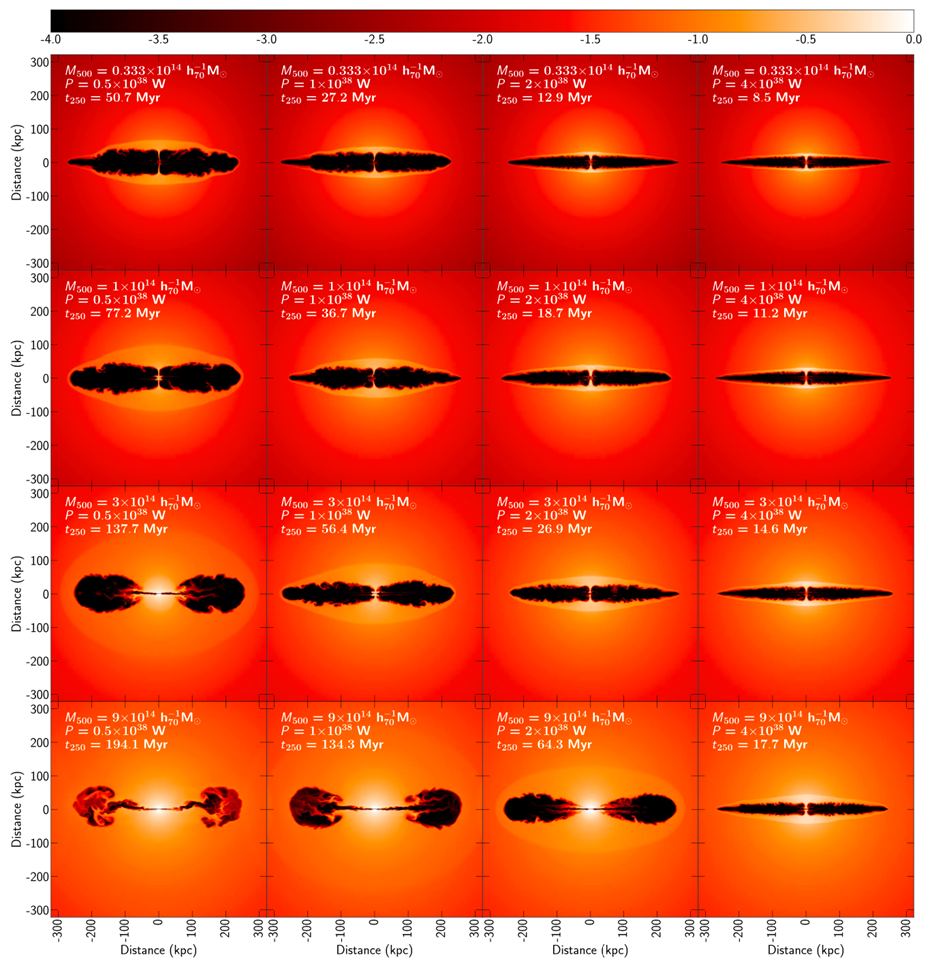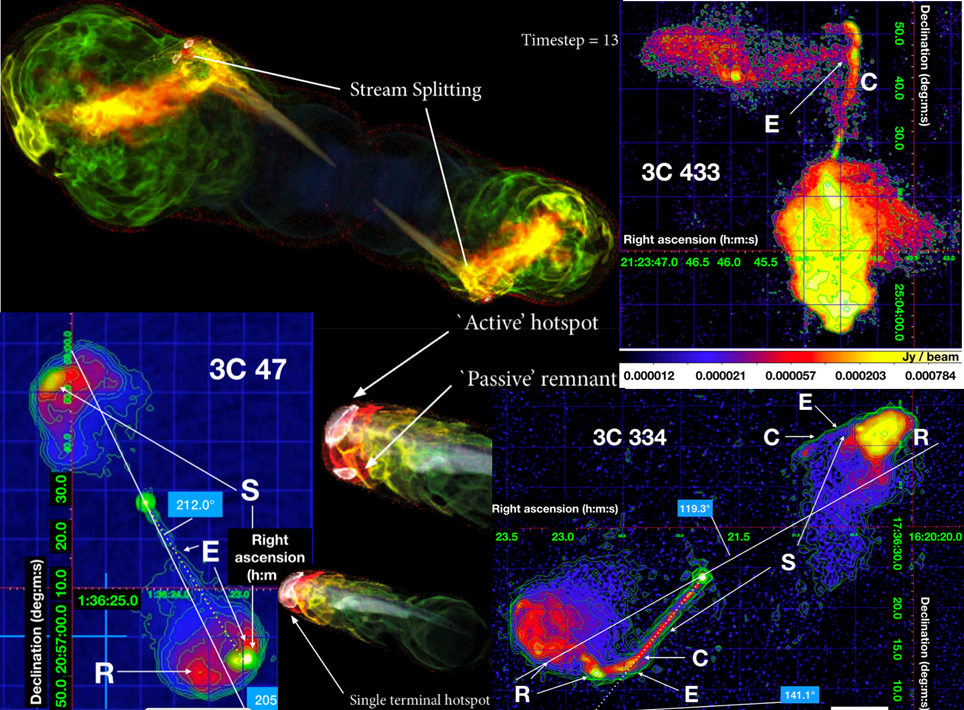Radio Galaxies
(Hardcastle, Krause)
Radio-loud AGN are routinely invoked as sources of 'AGN feedback' in cosmological models, but in order to understand their detailed effect on their environments we need realistic high-resolution simulations of their evolution, with parameters matched as closely as possible to what is actually observed. In addition, such simulations can give us uniquely good information about the evolution of the radio properties of these sources (length, radio luminosity, radio spectrum) with time. We have been carrying out a suite of simulations with increasingly good (i.e. physically realistic) modelling of both the cluster environments and the host galaxies themselves: in our latest work we include relativistic jet speeds, realistic (i.e. ultra-light) jet densities and accurate (observation-matching) magnetic field strengths.

Movies Animation 1 and Animation 2 present 360-degree fly-by sequences of a computer model of an Active Galactic Nucleus (AGN) Fanaroff-Riley II (FRII) classification jet system extending to 250 kilo-parsecs (kpc) in both directions. The spinning Black Hole from which the two jets emerge is positioned at the centre of a galaxy cluster, the pressure from this alters the shape of the extended lobes such that they are pinched in the middle and so become two separate prolate-spheroidal shapes (i.e. balloon-like). One of these models shows the lobes frozen in time, extended to 250 kpc, whilst the other shows the growth in the lobes over time as they extend to their maximum length whilst being inflated by chaotically moving bright plasma. Both movies demonstrate the bright synchrotron-emission, caused by spiralling relativistic electrons being accelerated in the magnetic field of the jet material. When you look carefully, you can see the brightening caused by relativistic Doppler Boosting - this happens when the jet material is projected towards us and so that jet appears brighter (and the counterjet is dimmer, as it is Doppler de-Boosted). This jet-cluster model is one of the most realistic created as it uses values of pressure, density, jet speed and magnetic field strength found in typical observed examples.
The jets in the simulations above were produced by assuming a constant ejection direction, appropriate for a single supermassive black hole where the jet direction is given by the fixed direction of the black hole spin vector. In a binary supermassive black hole, the black hole spin would in general precess around the angular momentum vector, which is called geodetic precession. We have performed 3D simulations of such precessing jets. They produce some typical features like jet breaking, double hotspots from stream splitting or deflection at the lobe boundary, curvature or jets pointing towards the edge rather than the middle of the lobe. The figure below gives some examples of 3D volume rendering of the jet structures along with some examples from 3C catalogue of powerful radio sources.
